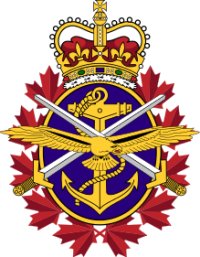 In a post from earlier this week about defence spending priorities for the Canadian military, Ted Campbell looks at how wars changed between the first half of the 20th century and the post-Cold War situation we face today:
In a post from earlier this week about defence spending priorities for the Canadian military, Ted Campbell looks at how wars changed between the first half of the 20th century and the post-Cold War situation we face today:
Is the 2% goal wrong?
No … it’s a pretty sensible level of defence spending for countries that really want to maintain a world at peace, as opposed to those, like Canada and many of its allies, that just want to hope for peace. But 2% is not a magic bullet … 1.5% of GDP, spent carefully, will do more than 2% spent as a job creation slush fund. But spending too little, cutting defence spending again and again and again just because it is unpopular can leave a country with what I have described as a Potemkin Village, a military that is more show than force.
The advent of a nuclear face-off circa 1950 changed the strategic calculus for the rest of the 20th century. We suddenly had the “come as you are war” which meant having regular, professional forces in being and not being able to rely upon time and space to give us time, as we had in past wars, to mobilize our reserves. We would do well, 101 years after the battle of Vimy Ridge, to recall that it, in April 1917, was the first time since war was declared (in the summer of 1914) that the full Canadian Corps, of four infantry divisions, was in battle as a corps ~ it took us over 30 months to get from a tiny standing army backed by small but eager reserves to a full corps composed of about 100,000 of the Canadians who served overseas during that war. We went to war again in the late summer of 1939 and it was not until the summer of 1943, over 40 months later, that we had a small corps, of only two divisions and an independent armoured brigade, in battle, in Italy. It takes a long time to mobilize and equip and train an army. The operational doctrine of the long and expensive cold war said that we could no longer have that time.
It is not clear that we must or even should still have small reserves and a relatively larger permanent force. Perhaps the time has come to re-examine the assumptions that underlie our force structure ideas. Maybe we need 150,000 uniformed people but, maybe, the split should be 50/50 or 75,000 full time and 75,000 part time sailors, soldiers and air force members. Maybe a country like Canada, with a population that will, in 2050, approach 40 million, should have a larger force: say 75,000 full time and even 150,000 part time military members … maybe our reserve force “regiments’ should have 500 or 750 soldiers and be required to “generate” a trained company (125 soldiers) rather than having only 150 soldiers and being hard pressed to “generate” a platoon of only 30 soldiers. I have my own ideas, but someone who has the necessary information at their disposal needs to look ahead at our strategic situation and develop a force model and a sane budget for 2050. That should be a job for skilled civil servants in the defence policy staff.
Our strategic priorities for the next 30 years or more need to be:
- Containing and reducing threats to global peace and security by helping to maintain alliances like NATO and groupings like AUSCANNZUKUS and supporting global peacemaking and peacekeeping efforts, even the generally worthless United Nations efforts;
- Confronting current threats to peace ~ like Russia ~ and deterring (by matching the growth in military power of) potential future threats ~ like China;
- Cooperating with the USA in the protection of North America; and
- Securing the land we claim as our own, the waters contiguous to it and the airspace over both.
When we work out the costs, of people, above all, but also of ships, tanks, guns and aircraft, and of ammunition, food and fuel and everything else, of doing those four things ~ and of doing them well enough ~ then we will know what what sort of forces we need and how much we must budget to build and maintain them. But no matter what the size and what the cost, I guarantee that people will still be the biggest single expense if we keep our priorities straight: and the overarching priority is that people cost more than machines because they matter more than machines.



